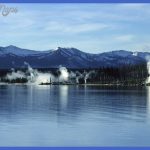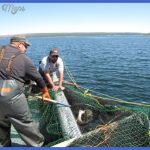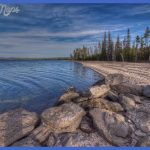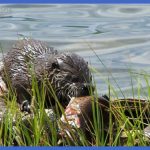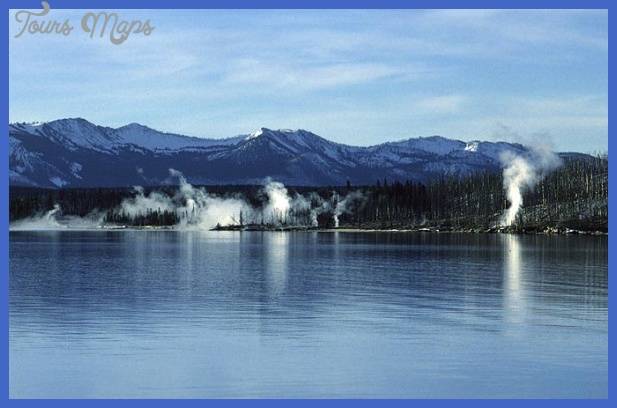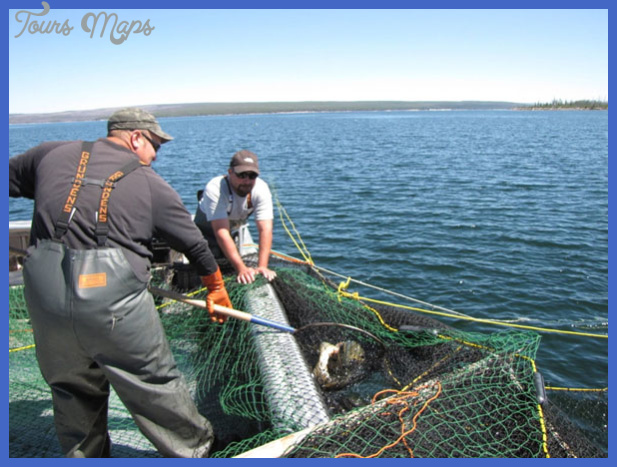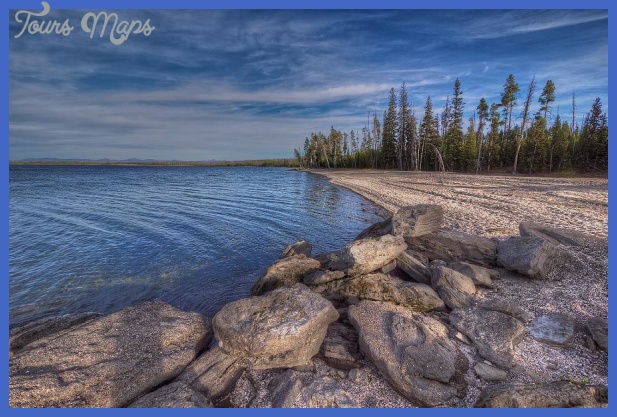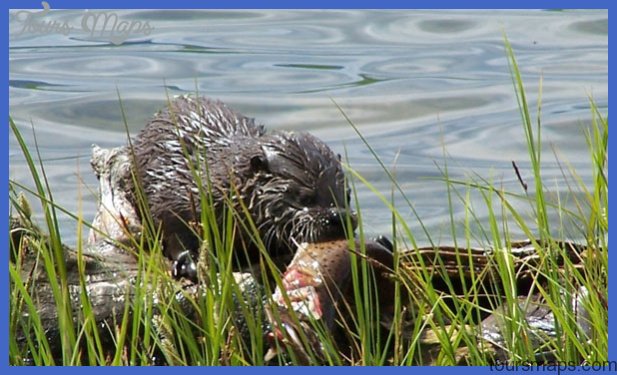In recent years, scientists have explored some of the lake’s bottom using a submersible robot called a Remotely Operated Vehicle (ROV). They’ve learned that Mary Bay at the lake’s north end, where temperatures up to 212°F (100°C) have been measured, is a major hydrothermal explosion crater complex that erupted about 13,000 years ago. They’ve also found deep pits that may be old explosion craters. At least two other hot areas in the lake are being studied. West Thumb Bay is one of these areas, with huge hot gas eruptions that stir up food for enterprising trout. Another is northeast of Stevenson Island, where the ROV found a deep underwater canyon containing several hydrothermal springs. Five years later, the scientists returned, just after a major earthquake had shaken the area.
The canyon had disappeared! Spires as tall as 26 feet (8 m) grow in clusters on the lake bottom at one lake hot spot, Bridge Bay. These pinnacles are made of the siliceous shells of diatoms, microscopic algae that live and die near the lake bottom. Exactly how these hydrothermal features form is as yet unknown. Lava flows that are still very hot underlie much of the lake. Thus all the possible thermal features that we see in the rest of the park are here, only modified by having a lake sitting on them. The result is that many explosion craters dot the lake perimeter, and we know from recent research that there are more on the lake floor. There are also dome-like features, some one-third of a mile (0.5 km) in diameter, bulging up perhaps due to steam.
Yellowstone Science and the Lake Photo Gallery
Maybe You Like Them Too
- The Best Cities To Visit in The World
- World’s 10 Best Places To Visit
- Coolest Countries in the World to Visit
- Travel to Santorini, Greece
- Map of Barbados – Holiday in Barbados

